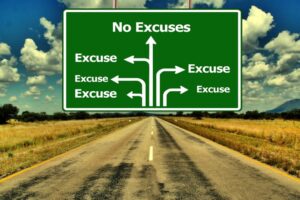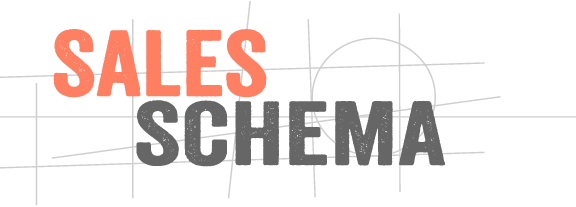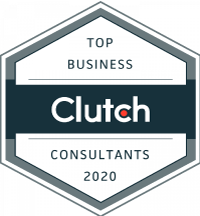B2B salesforces were once information armies: they had a serious edge because they owned the privileged details their prospects craved. That’s not the case now: the commoditization of information means that most everything you need to know is usually a few clicks away.
Today’s successful companies are the ones that go as far as possible to let their buyers research and interact with their products before speaking to a salesperson. As reported by McKinsey partner Brian Stafford in Fortune, this strategy brought its digital practitioners huge results: doubled revenue growth and 30 percent better sales efficiency compared with those using a traditional enterprise sales model.

Above all, this disruption melds B2C marketing practices with traditional B2B sales functions. Salespeople have to think more like marketers, and vice versa.
What steps should you take to move with the changing tide? Stafford advises B2B’s to do the following:
- Shift to an “aggressive” focus on digital marketing
- Use the product as a sales tool
- Predict what customers will want to buy next to increase up sell efficiency
That’s fine and good for sleek SaaS apps. It’s relatively easy for digital companies to offer their prospects an immersive user experience. Demos and freemium models are mainstays at this point.
Here’s the big question…
What if your product is non-digital?
Maybe your offering involves human interaction at every stage. For many other B2B’s, it’s not about user experience. It’s about being trustworthy, familiar, convenient, and available, among other inherently analog qualities.
If you sell IT services, business insurance, commercial real estate, or professional services, you can’t just slide your offering up to the cloud. Going digital is not as straightforward as the marketing gurus imply.
Digital Limitations
When I was selling explainer video services at IdeaRocket, we went above and beyond to give prospects the complete product experience. This entailed an expansive portfolio, infographics about the production process, a video series on how to measure video ROI, weekly blog content from professional writers, a frequent newsletter… And all of it was delivered through a super snazzy site.
At the end of the day, however, my colleagues and I still had to exchange a ton of emails and calls before onboarding new customers, even if they were well-informed. For us and many B2B’s, there’s a ceiling that limits the insight that can be offered through the digital medium.
If your product is not fully digital, you can still leverage Stafford’s informed advice. It just means getting more creative. It’s tempting to emulate what a SaaS product did to make a billion dollars, but if you don’t share their agility, the strategy will probably fail. Instead, you have to find ways to make digital enhance or automate what’s already successful.
What Strategies Can You Apply?
Here are some free floating ideas that are relatively easy to implement.
- Automate Email
Do you email individual clients to congratulate them for company or professional successes? Use Newsle to stay informed and use Mandrill to send “personalized” to large groups.
- Track Email
Use technology like YesWare to understand the context in which your prospects are consuming your cold emails.
- Automate Social Media
Is everyone telling you to post more social messages to stay top of mind with clients and prospects? If you’re like me, keeping up with the social grind is a huge pain. It’s one I avoided for a long time. Then I bit the bullet and paid $10/month for Buffer. Now I schedule all my messages at the beginning of the week. I’m done in 30 minutes and my presence is much stronger.
- Web Video
If you use sales collateral, you can probably re-purpose it into a short video. Video is more likely to be shared among your prospects than any other content.With the rise of web video, many companies jump into production on explainers and commercials. These formats are extremely effective, but they’re not your only options. You might consider relatively inexpensive screencast walkthroughs, as well as customer testimonials. If you sell based on trust instead of product differentiation (ie. business insurance) the latter is worth exploring.
- E-Learning for Lead Generation
The rise of E-learning and online courses is slated to increase exponentially in the near future. The course marketplace Udemy touts 6 million+ users.If you’re a salesperson, you offer valuable information to your prospects and customers on a daily basis. Why not distill your knowledge into a digestible hour-long course? Creating an online course might sound intimidating at first, but it shouldn’t be. You can do it within 30 days, as I did with my B2B Sales course. Keep it permanently free and direct viewers to a landing page at the end. Once you’ve created the video modules, you can post them on YouTube to drastically increase your audience. Udemy is becoming the bread and butter for boutique ad agencies and other professional service firms. As an added bonus, you can send your instructional videos to new employees to make product training more efficient.
What Sales Disruption Means for Sales Schema
The changing tide inspired the revamping of our site here at Sales Schema. As you might have noticed, we’ve started featuring articles, courses, and forthcoming books about digital marketing-related topics, such as explainer videos.
If you’re versed in traditional sales, I ask that you please keep an open mind to video marketing, e-learning, and other ideas. They’ll make you stronger. Conversely, if you’re a techie salesperson/marketer, don’t be afraid to pick up the phone and go Glengarry Glen Ross every once in a while!








